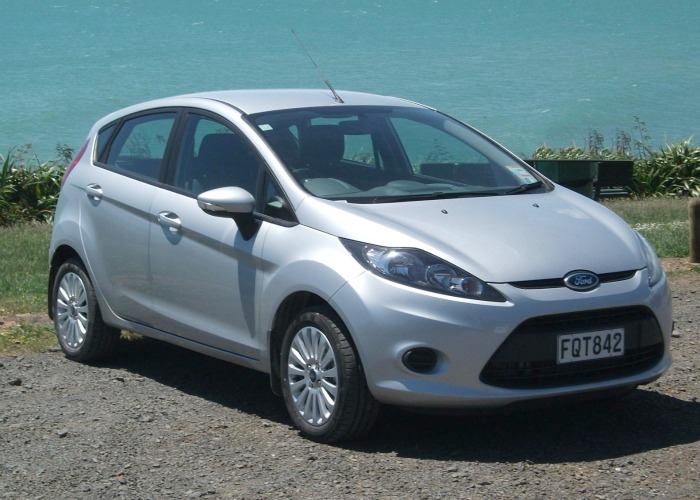
Car reviews
Read our expert car reviews - where we give insight into the latest vehicles to hit our roads.
09 February 2011
Still the likeable little car it always was, Ford Fiesta 2010 buyers now have more choice, more power in automatic models and a world class transmission. Useful technical upgrades enhance an already very capable car.

Ford’s funky little Fiesta hardly seems to have been around long enough to warrant a facelift, but to complement the numerous engineering enhancements for 2011 the exterior has been given a makeover too.
Exterior modifications are kept to a minimum, with subtle changes to the lower grille, new wheel designs, body-coloured bumpers, new paint colours and some changes to interior trim materials.
But the real changes are those that are more than skin deep, with the useful technical upgrades enhancing an already very capable car.
When launched in 2009, Ford offered two Zetec models; a 1.6 litre manual and a 1.4 litre automatic. We found the 1.6 manual particularly impressive, but while the 1.4 automatic was a very good city car, we felt it struggled a little on the open road, not only due to the smaller engine capacity, but we would have preferred a five speed auto over the four speed unit Ford had opted for.
But for the latest round of enhancements, Ford has gone one better and given us two more ratios in the form of a six speed Powershift automatic, as well as upgrading the engine capacity to 1.6 litres. All manual versions retain a 5 speed ‘box.
Zetec models continue with the sporty theme, with sport suspension, a sport body kit and more bright work for the new model, with chrome accents around the front fog lights on the outside and bright highlights in the cabin.
The new Powershift automatic transmission is of the new dual clutch design we’ve raved about in other vehicles previously, and its fitment in the 2011 Fiesta gives us yet another box to tick on the positive side of the ledger for Ford.
The Fiesta range has also been extended to include a wider model range, giving buyers a greater number of options to choose from.
In addition to the manual and automatic Zetec models, Ford has introduced a pair of lower priced petrol powered LX models, one manual and one auto, as well as a manual LX diesel, added to the previously announced range-topping ECOnetic model, also with diesel power.
As the name suggests, the Fiesta ECOnetic is the environmentally friendly, greenest model in the range, returning a claimed 3.7l/100km, making it New Zealand’s most fuel-efficient vehicle according to Ford. The ECOnetic has many of the usual array of fuel saving enhancements, including low rolling resistance tyres and a re-mapped engine management, although there’s no stop/start system as with many of the ECO competitors.
The 1.6 litre petrol engines for both manual and Powershift automatic versions produce 89kW of power and 151Nm of torque and regardless of transmission Ford quotes a fuel consumption figure of 6.1l/100km. Pricing starts at $23,990 for the LX petrol manual and $25,990 for the automatic, while the Zetec models command a $2,000 premium at $25,990 for the manual and $27,990 for the auto.
The LX 1.6 diesel manual with a 66kW/200Nm 1.6 litre powerplant achieves a quoted 4.4l/100km and retails for $25,990 while the ECOnetic diesel with the same engine capacity produces 70kW/200Nm, with a retail sticker of $30,990.
Ford told us at the original Fiesta launch that their new baby was to become a truly global model, and with the introduction of the enhanced model range, most models for our market are now no longer coming from Europe, but are built at a plant in Thailand.
While every bit as good on the road as the European built Fiesta we had before, the soft touch dash top material has gone and made way for a harder plastic moulding and the spare wheel has been replaced with a Tyre Mobility Kit (TMK). Also, we're used to seeing double clutch auto's having a manual mode and paddle shifters, but no such gadgetry for the Fiesta.
A spare wheel can be ordered as an accessory item and perhaps manual shifting isn't needed in this sector, but we wonder why the Thai plant couldn’t match the nicer quality dash finish of European built car, which is still present in the ECOnetic model which continues to be built in Europe.
The high equipment levels that impressed us back in 2009 remain, with all models fitted with Bluetooth, voice activation, USB and Aux interfaces for personal entertainment devices, steering wheel mounted audio controls, cruise control and safety features including curtain airbags and Dynamic Stability Control.
Still the likeable little car it always was, buyers now have more choice, more power in automatic models and a world class transmission.